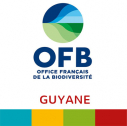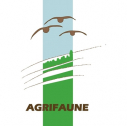Retour d'expérience - Lutter contre les phénomènes de sécheresse et d’érosion à GAEC de Lait'spérance (Ille-et-Vilaine) [FR/ENG]
Version en français
Les fiches de retours d’expérience de projets de Solutions d’adaptation fondées sur la Nature élaborées par CDC-Biodiversité, le comité français de l’UICN et l’OFB dans le cadre du projet Life ARTISAN, ont pour objectif d’inspirer les décideurs publics et privés, aménageurs, propriétaires forestiers et agricoles ou gestionnaires d’aires protégées, voulant mettre en œuvre un projet de SafN. Les fiches présentent des informations concernant les contextes et les enjeux socio-économiques et écologiques, les sources de financement et le budget, les acteurs et parties prenantes impliqués et la gouvernance, les actions mises en œuvre, les résultats attendus ou observés, les indicateurs de suivi de ces derniers, ainsi que des leviers de réussite et des recommandations.
Reconvertie et reconnue exploitation agricole biologique, le GAEC Lait’spérance a un cheptel de 110 vaches laitières de race Phrim Hostein et de 70 génisses pour sa production laitière, activité principale sur l’exploitation. Aujourd’hui, la ferme fait face à des problématiques d’érosion des sols et de sécheresses à répétition, entraînant des pertes de rendements et une situation d’inconfort pour le troupeau l’été.
En introduisant l’arbre au coeur de l’exploitation, l’enjeu est de garantir un havre de paix pour la biodiversité tout en inscrivant l’exploitation dans un mode de gestion plus durable. La plantation d’alignements de hauts-jets mais aussi de taillis fourragers permettront à la fois de garantir de l’ombre pour les animaux tout en constituant une source de fourrage complémentaire et diversifiée, grâce à un recépage régulier et un pâturage régulé. Ils auront par ailleurs une vocation novatrice puisqu’ils permettront de produire du Bois raméal fragmenté (BRF). Une fois broyé et répandu sur les sols, il favorisera la régénération naturelle des sols en reconstituant du humus forestier. Les copeaux de bois pourront également servir de paillage avant d’être restitués aux parcelles. La surface totale du projet est de 18,8 ha.
English version
The feedback sheets developed by CDC-Biodiversité, the French UICN Committee, and the OFB as part of the Life ARTISAN project aim to inspire public and private decision-makers, planners, forest and agricultural landowners, or protected area managers interested in implementing a Nature-Based Solutions project. They offer insights into socio-economic and ecological contexts, funding sources, stakeholders, governance, implemented actions, outcomes, monitoring indicators, success factors, and recommendations.
The joint agricultural grouping (GAEC) Lait’spérance has been labelled as having converted to organic farming and has a herd of 110 Phrim Hostein dairy cows and 70 heifers for milk production, the farm’s main activity. Today, the farm is facing problems of soil erosion and repeated droughts, causing yield losses and discomfort for the herd in summer.
By reintroducing trees into the farm, the issue is to provide a safe haven for biodiversity while ensuring that the farm is managed in a more sustainable way. The planting of tall trees and fodder thickets in rows will both enable shade to be provided for the animals and provide a complementary and diversified source of fodder, based on regular pruning and controlled grazing. They will also have an innovative function, enabling them to produce ramial chipped wood (RCW). Once chipped and spread on the soil, it will encourage natural soil regeneration by reconstituting forest humus. The wood chips can also be used as mulch before being returned to the plots. The total surface area of the project is 18.8 ha.











